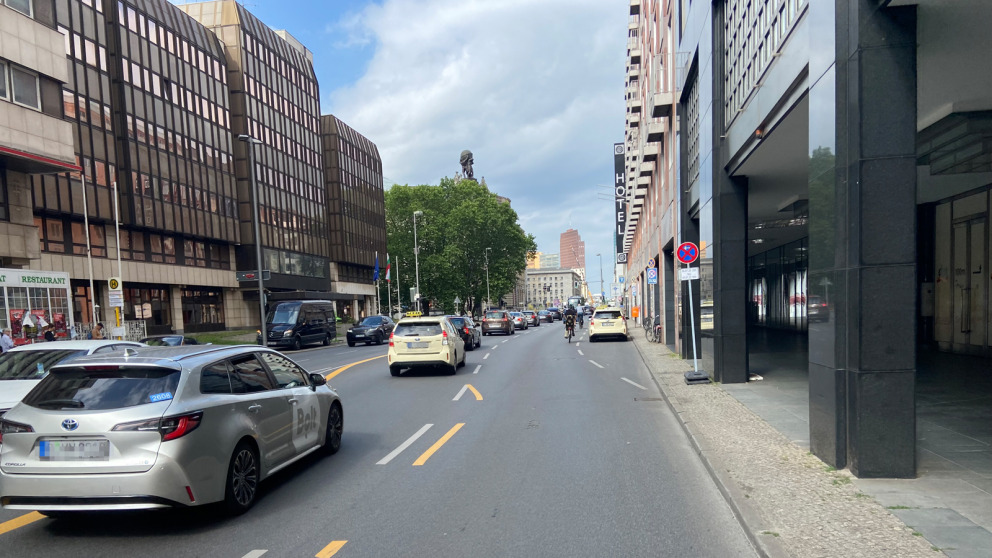Overline:
Road Safety
Headline:
Large Majority in Favour of Maintaining 30 km/h Zone on Leipziger Straße
In a survey conducted by the Research Institute for Sustainability (RIFS) in June and July 2023, around 80 per cent of the 64 cyclists surveyed stated that a speed limit of 30 km/h should be maintained on Leipziger Straße in the central Mitte district of Berlin. Pedestrians surveyed expressed similar views. There is also strong support for the creation of a bike lane that is physically separated from motorised traffic.

A speed limit of 30 km/h has been in force on Leipziger Straße since 2017. Following the completion of construction work on Leipziger Platz, the Senate plans to reinstate the previous speed limit of 50 km/h on the road. According to the RIFS survey, cyclists and pedestrians widely reject the proposal: 80 per cent of the non-motorised road users surveyed were in favour of maintaining the 30 km/h speed limit.
The RIFS Study Umfragen zur Sicherheit in der Leipziger Straße in Berlin (Surveys on Safety on Leipziger Strasse in Berlin) offers an overview of the numbers and views of cyclists and pedestrians on Leipziger Strasse. Over 28 observation periods in June and July 2023, the researchers surveyed road users at two locations (Leipziger Platz and the Leipziger Straße/Charlottenstraße intersection) and also collected data on details such as the gender and ages of road users and whether they were accompanied by children. The researchers also questioned 64 people about their sense of safety on Leipziger Strasse and their assessment of various traffic measures such as maintaining the 30 km/h speed limit and installing a physically-separated bike lane.
Cyclists feel unsafe
At 81 per cent, support for maintaining the 30 km/h speed zone among the pedestrians surveyed was similar to that of cyclists, although the majority of pedestrians reported feeling “rather safe” or “very safe” on Leipziger Strasse (83 per cent). However, 55 per cent feel that the current road design is unsafe for children. The suggestions for improvement include more green spaces, reducing motorised traffic and improving e-scooter parking facilities.
Among the cyclists surveyed, however, 74 per cent stated that they feel “rather unsafe” or even “very unsafe”. Around 60 per cent of respondents reported using parallel roads to avoid Leipziger Straße. The respondents favoured the introduction of a bike lane indicated by coloured pavement and a wide safety separation strip (73 per cent) or a design that combines safety separation strips with lane dividers (83 per cent) as a measure to make cycling safer on Leipziger Strasse.
Traffic counts highlight the demand for safe cycling infrastructure, with bicycle traffic volumes of between 0.47 and 5.33 bicycles per minute. Where bike lanes are available, almost all cyclists use them.
The survey was conducted as part of a research project led by the Senate Department for Mobility, Transport, Climate Protection and the Environment, which aims to improve air quality and improve the accessibility and use of busy roads for pedestrians, cyclists and public transport.
Caseiro, A., Ritter, D., Janssen, I., Schmitz, S., von Schneidemesser, D., & von Schneidemesser, E. (2024). Umfragen zur Sicherheit in der Leipziger Straße in Berlin. RIFS Study, März 2024. https://www.doi.org/10.48481/rifs.2024.006



